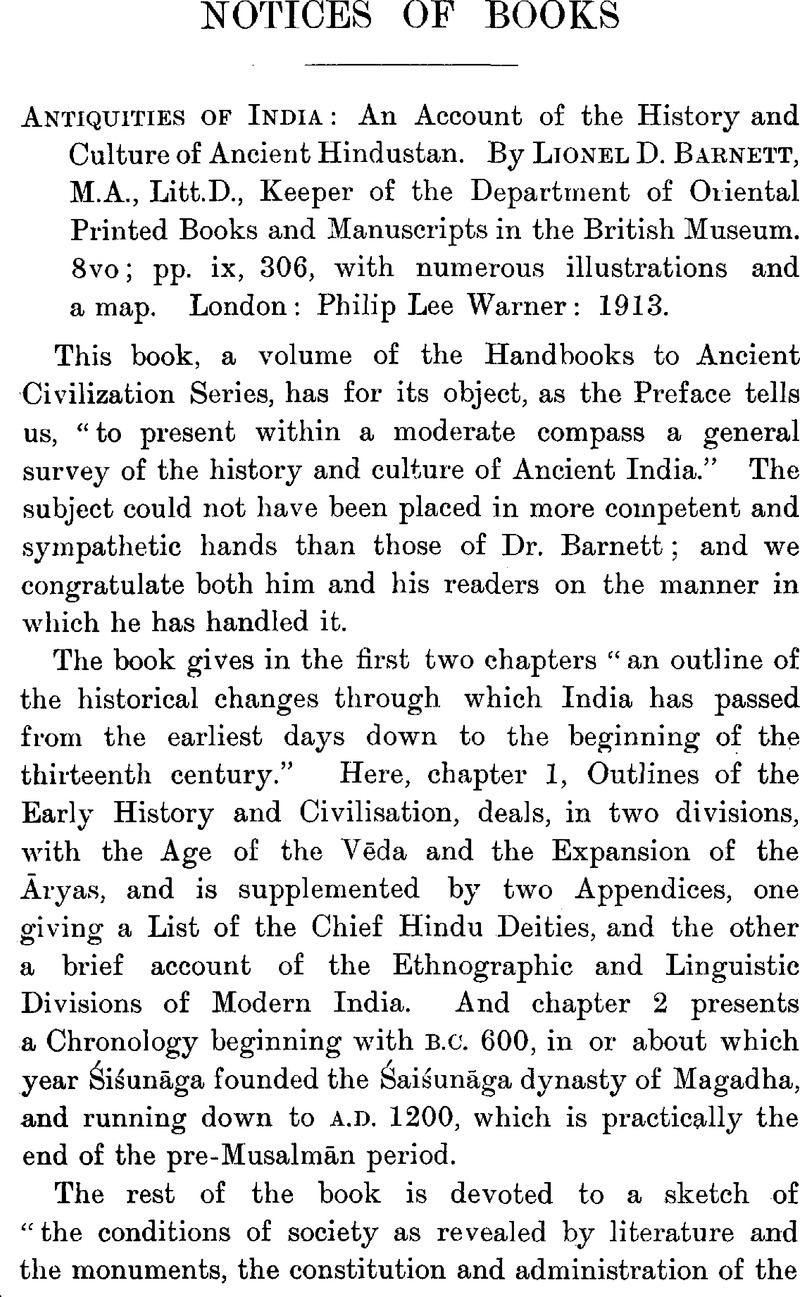No CrossRef data available.
Article contents
Antiquities of India: An Account of the History and Culture of Ancient Hindustan. By Lionel D. Barnett, M.A., Litt.D., Keeper of the Department of Oriental Printed Books and Manuscripts in the British Museum. 8vo; pp. ix, 306, with numerous illustrations and a map. London: Philip Lee Warner: 1913.
Published online by Cambridge University Press: 15 March 2011
Abstract

- Type
- Notices of Books
- Information
- Copyright
- Copyright © The Royal Asiatic Society 1914
References
1 This carries back to the time of the Kauṭilīya a rule which is found in various forms in the astronomical books of the later period, and resolves itself into the formula “fraction of daytime = gnomon divided by twice gnomon-plus-shadow.” The rule postulates (1) that there is no shadow at noon, and (2) that, when the sun is half-way up or down, the length of the shadow is equal to the height of the gnomon: it really applies only for places along the equator and at the time of an equinox, and, even so, is exactly correct only for sunrise and sunset, 9.0 a.m. and 3.0 p.m., and noon; but the Kauṭilīya, in accordance with the system of mean or uniform time, which alone was known in those days, applies it for the latitude and time of the summer solstice and for any part of the daytime.




